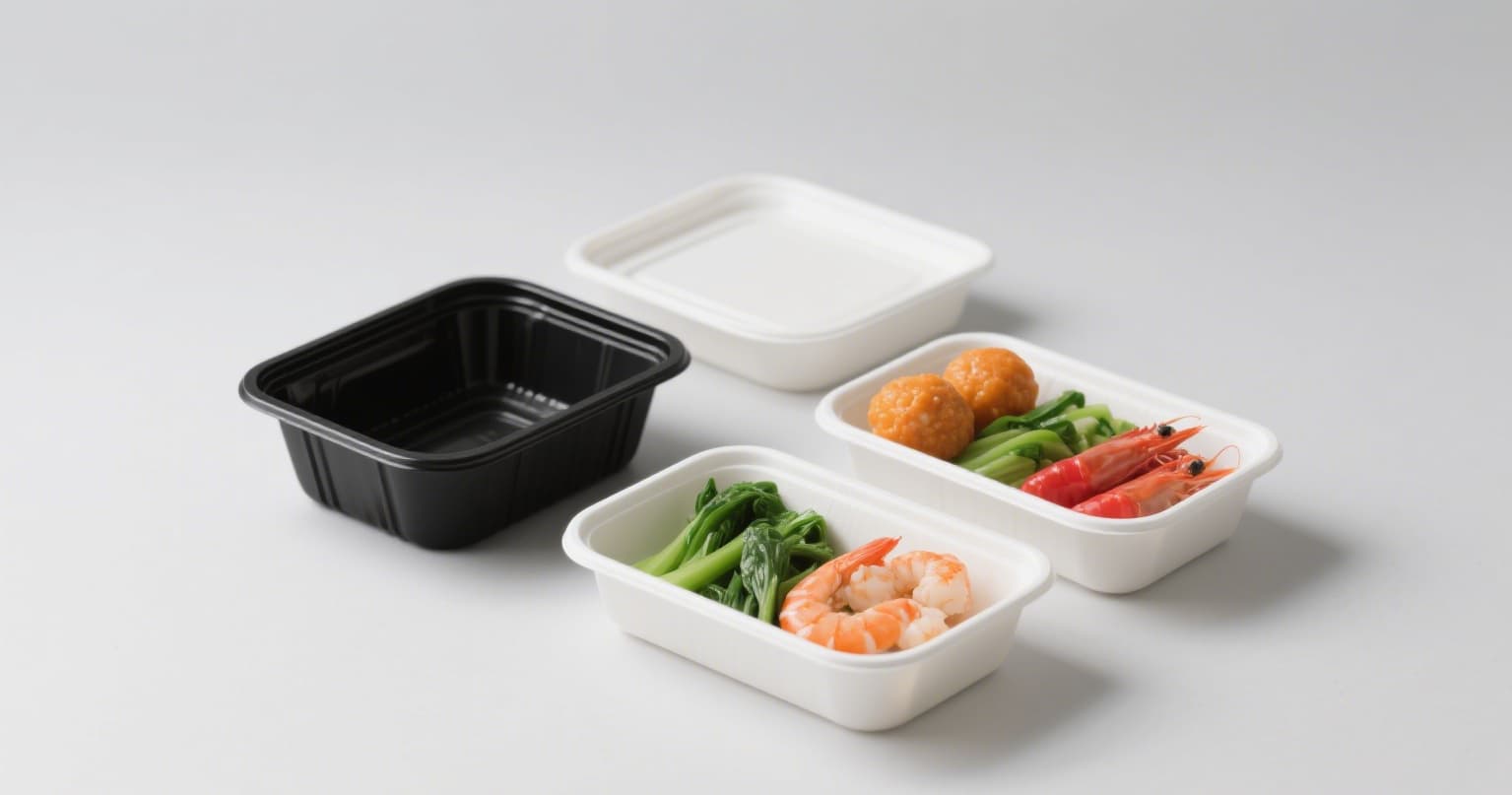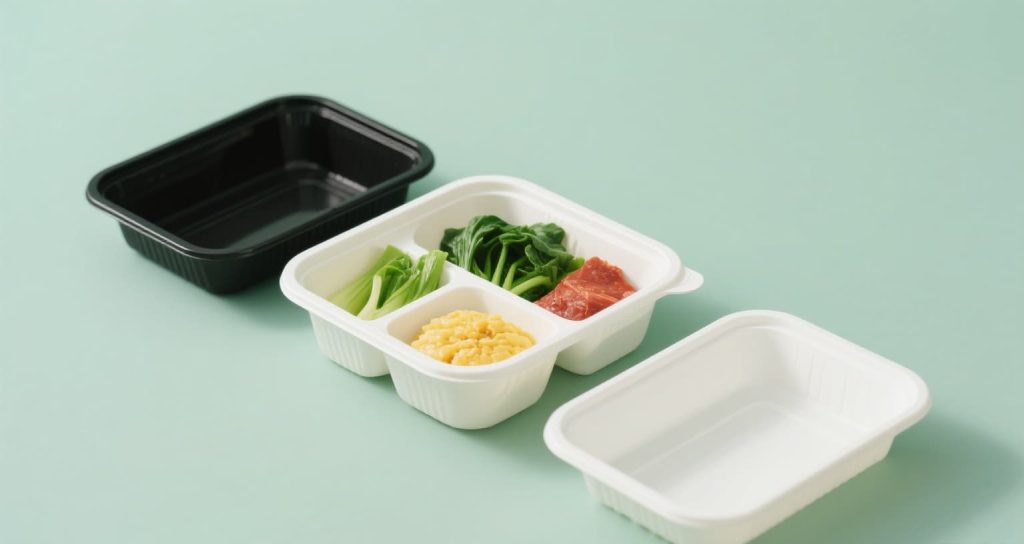In the evolving world of food packaging, selecting the right material is crucial for ensuring product safety, maintaining freshness, and meeting sustainability goals. One material gaining significant attention in the foodservice and retail industries is CPET material. But what exactly is CPET, and why is it becoming a preferred option for many food packaging applications? This blog dives deep into the properties, benefits, and uses of CPET material.
🔍 What is CPET Material?
CPET stands for Crystallized Polyethylene Terephthalate, a type of polyester enhanced by a crystallization process that improves its thermal resistance and mechanical strength. Unlike standard PET, CPET can endure high temperatures, making it suitable for ovenable and microwave-safe containers.
⚙️ Key Properties of CPET Material
| Property | Details |
|---|---|
| 🔥 Heat Resistance | Withstands temperatures up to 220°C (428°F) without deformation. |
| 💪 Durability | High mechanical strength and rigidity to maintain shape during transport. |
| 🧪 Chemical Resistance | Resistant to oils, fats, acids, ensuring food safety. |
| ⚖️ Lightweight | Reduces shipping weight and carbon footprint. |
| ♻️ Recyclability | Accepted by many recycling programs worldwide. |
📊 CPET Material by the Numbers
- Temperature Range: -40°C to +220°C
- Tensile Strength: ~55 MPa
- Impact Resistance: 3.5 kJ/m²
- Recycling Rate: Approximately 30% of PET recycling streams include CPET (varies regionally)
- Market Growth: CPET packaging market expected to grow at 5.5% CAGR globally from 2024 to 2030 (Source: Packaging Insights 2024)
🌟 Why Choose CPET Material for Food Packaging?
1. Versatility for Hot and Cold Foods 🥘❄️
CPET packaging is uniquely capable of maintaining performance in both freezing and heating environments, ideal for frozen ready meals that can be heated directly in the container.
2. Microwave and Oven-Safe Convenience 🍽️
Consumers seek convenience; CPET’s ability to withstand oven and microwave heat without leaching harmful chemicals makes it a trusted choice for food brands.
3. Extended Shelf Life and Food Safety 🛡️
Thanks to excellent moisture and gas barrier properties, CPET containers protect food from contamination and spoilage, extending product shelf life.
4. Customizable and Attractive Design 🎨
CPET trays can be formed into various shapes, sizes, and colors, plus printed with high-resolution graphics for premium branding.

🥡 Common Applications of CPET Material
- Ready meal trays and containers
- Ovenable food trays
- Airline meal trays
- Bakery trays for hot products
- Microwaveable frozen food packaging
♻️ Sustainability and Recycling of CPET Material
CPET is recyclable in many developed markets, often processed along with PET streams. However, recycling infrastructure varies by country. Brands should collaborate with waste management to ensure proper collection and recycling.
Emerging innovations include bio-based CPET and blends to further lower environmental impact.
🚀 Real-World Example: Xiamen Dashan’s CPET Solutions
At Xiamen Dashan, we specialize in high-quality CPET food packaging designed for global markets. Our products comply with international food safety standards and offer excellent heat resistance and mechanical strength. Whether for ovenable trays or airline meal packaging, our CPET material solutions ensure reliability and sustainability.

❓ Frequently Asked Questions (FAQ)
Q1: Can CPET containers be reused?
A: CPET is designed primarily for single use due to hygiene and performance standards.
Q2: Is CPET biodegradable?
A: No, CPET is not biodegradable but recyclable.
Q3: How does CPET differ from PET?
A: CPET is crystallized PET, allowing it to resist higher temperatures.
Q4: What temperature range can CPET withstand?
A: From -40°C to +220°C.
🔚 Conclusion
CPET material provides a durable, heat-resistant, and recyclable solution that meets the growing needs of food packaging. Its balance of safety, convenience, and sustainability makes it a smart choice for brands worldwide.
📚 References
- Packaging Insights, “Global CPET Packaging Market Analysis 2024,” https://www.packaginginsights.com/news/global-cpet-packaging-market-growth.html
- Smithers Pira, “Thermoforming Materials and Sustainability Trends,” 2023, https://www.smithers.com/resources/2023/thermoforming-materials
- European Bioplastics, “Recycling and Biodegradability of Polyester-based Packaging,” 2024, https://www.european-bioplastics.org/recycling-polyesters
- Food Packaging Forum, “Heat-Resistant Plastics in Food Packaging,” https://www.foodpackagingforum.org/heat-resistant-plastics
- Environmental Protection Agency (EPA), “Plastic Packaging Recycling Guidelines,” https://www.epa.gov/recycle/plastic-packaging-guidelines
